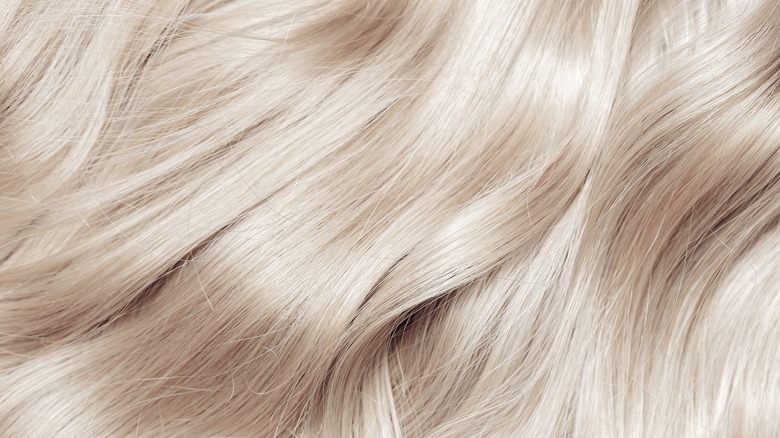Human Hair Is A New Renewable Resource
Want to save the world? Get a haircut. Human hair can help save the environment, fight global warming, and clean up our oceans.
While it's not unusual for people to sell their hair to wigmakers to make some extra cash, there are far more ways to reuse your old clippings. Human hair is strong, super absorbent, and — so long as the human race continues to walk the earth — renewable. Today, hair is increasingly being used by scientists for a myriad of projects you've never dreamed of — including to mop-up dangerous oil spills.
Anybody who has neglected to shower for a couple of days knows that hair can hold an incredible amount of greasy material. Not so great when you want to look fresh, but fantastic news for scientists cleaning up our oceans. Experts have begun to use old trimmings to make hairy blankets, which can be floated out to sea to absorb spills. According to CNN, just 500 grams of hair can absorb 1.5 gallons of oil.
Human hair represents an environmentally friendly alternative to other methods of cleaning up the seas, such as polluting polypropylene products. Unlike human hair, contaminated polypropylene does not break down when left in landfill sites.
Hairy high-tech
So far, so basic, but human hair is also increasingly being used to create advanced technology as well. In the future, some very high-tech gadgets will be powered by your luscious locks. Today, the enormous cost of building solar panels is a serious obstacle to the fight against climate change. Solar cells are normally covered in expensive silicon, a substance that needs to be ultra-pure in order to work in solar panels (via C&EN). However, back in 2009, an ingenious Nepali teenager built a solar panel in his bedroom, using human hair as a replacement (via the Daily Mail).
Fast forward to today, and researchers have begun converting hair into tiny "nanodots," microscopic pieces of carbon that can be inserted into panels (via SBS News). Once they are fully developed for commercial purposes, these hair powered-panels will be much cheaper and more efficient than older models. These nanodots also emit a bright glow, which means human hair may also one day be used to light up screens. Researchers say that the carbon product derived from hair is perfect for smartwatches and other devices with flexible displays.
Construction, farming, and textiles
Forgetting the high-tech wizardry, in its most basic form, hair can be very useful. Despite being very thin, hair is incredibly strong, and one ultra-fine strand of human hair can support a 100-gram weight (via The Guardian). This combination of strength and flexibility makes it ideal for construction and manufacturing. A 2020 study published in the Case Studies in Construction Materials journal demonstrated that concrete becomes both stronger and more pliant when human hair is added to the mix. And because hair can be spun like wool to make yarn, enterprising entrepreneurs are also increasingly using human hair to make a range of clothing and textile products (via Euronews). Those with eccentric tastes will be pleased to hear that includes creepy human-hair furniture as well (via Bloomberg).
Finally, hair may one day be used to grow your food. The keratin found in hair is a key component that helps plants to grow (via New Atlas). A group of scientists working on hydroponic farming — a type of farming that does not use soil — found that hair was the ideal medium to help plants take root. The team was able to grow a delicious salad of bok choy, arugula, and a host of other vegetables just using a mess of hair.
All these uses and more are made possible thanks to charitable projects such as the Sustainable Salons group, which offers up waste clippings to scientists and wigmakers.


